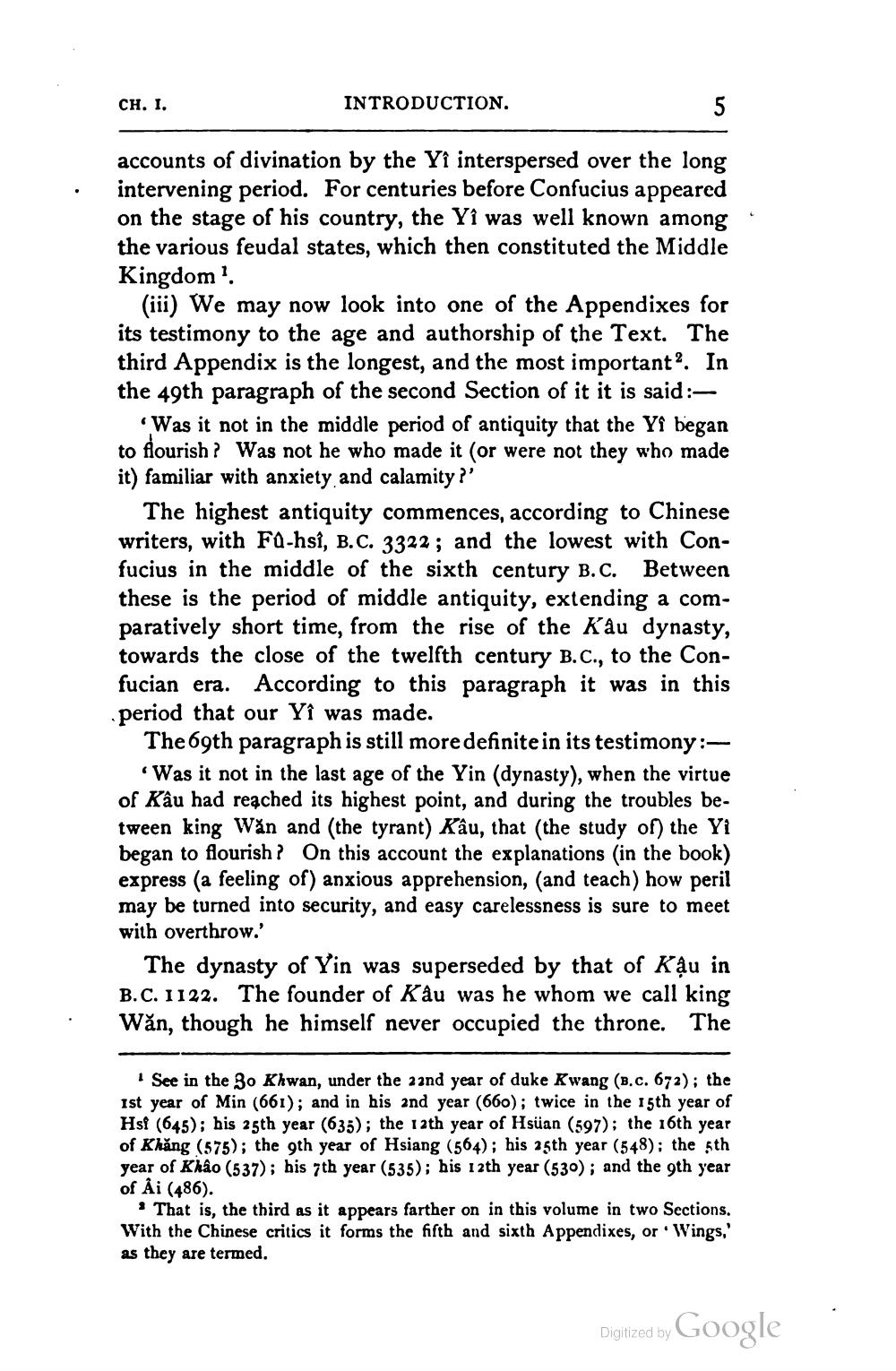________________
CH. 1.
INTRODUCTION.
accounts of divination by the Yî interspersed over the long intervening period. For centuries before Confucius appeared on the stage of his country, the Yî was well known among the various feudal states, which then constituted the Middle Kingdom?
(iii) We may now look into one of the Appendixes for its testimony to the age and authorship of the Text. The third Appendix is the longest, and the most important?. In the 49th paragraph of the second Section of it it is said:
Was it not in the middle period of antiquity that the Yî began to flourish? Was not he who made it (or were not they who made it) familiar with anxiety and calamity?'
The highest antiquity commences, according to Chinese writers, with FQ-hsi, B.C. 3322; and the lowest with Confucius in the middle of the sixth century B.C. Between these is the period of middle antiquity, extending a comparatively short time, from the rise of the K’âu dynasty, towards the close of the twelfth century B.C., to the Confucian era. According to this paragraph it was in this period that our Yî was made.
The 69th paragraph is still more definite in its testimony:
Was it not in the last age of the Yin (dynasty), when the virtue of Kâu had reached its highest point, and during the troubles between king Wăn and (the tyrant) Kâu, that the study of the Yi began to flourish? On this account the explanations in the book) express (a feeling of) anxious apprehension, (and teach) how peril may be turned into security, and easy carelessness is sure to meet with overthrow.'
The dynasty of Yin was superseded by that of Kậu in B.C. 1122. The founder of Kau was he whom we call king Wăn, though he himself never occupied the throne. The
See in the 30 Khwan, under the aand year of duke Kwang (B.c. 672); the Ist year of Min (661); and in his 2nd year (660); twice in the 15th year of Hsi (645); his 25th year (635); the 12th year of Hsuan (597); the 16th year of Khăng (575); the 9th year of Hsiang (564); his agth year (548): the 5th year of Khão (537); bis 7th year (535); his 12th year (530); and the 9th year of Ai (486).
. That is, the third as it appears farther on in this volume in two Sections. With the Chinese critics it forms the fifth and sixth Appendixes, or Wings,' as they are termed.
Digitized by Google




